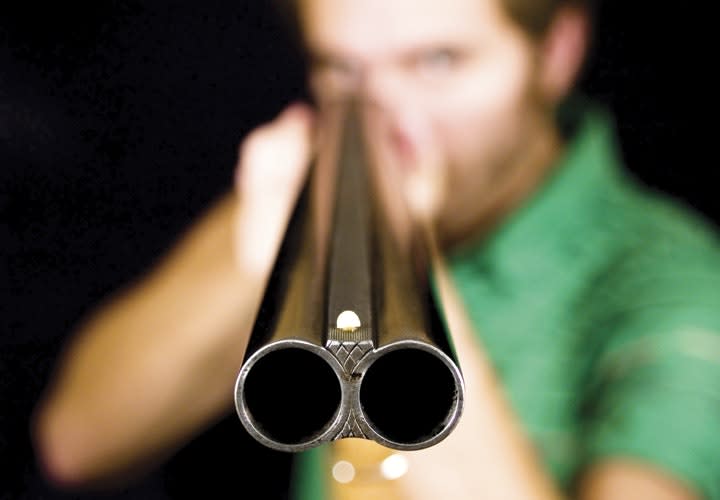Armed with this information, Kosheba, Trooper William Spayd, and U.S. Marshal Brian Hicks moved to the rear of the property and met with Berks County Sheriff's Department Dep. Kyle Pagerly and his K-9, Jynx. It was decided that Pagerly would deploy Jynx to search for Connor with Hicks and Kosheba providing cover. The remainder of the team would remain to clear the residence and outbuildings.
Pagerly made the obligatory K-9 announcements and let the dog go. Jynx immediately bounded toward a stream running through the rear of the Moyer property. The four lawmen followed, with Pagerly and Hicks covering the ground in rapid time and Kosheba and Spayd scanning the wood line as they followed.
Making their way deeper into the woods, they happened upon a makeshift encampment with numerous items, including a Kevlar vest that had been stashed inside a backpack as well as a topographical map of the area. To deny Connor access to them, Kosheba seized the items then pressed on to rejoin the K-9 team.
At a second encampment Hicks located some shotgun shells among other items. All signs indicated that they were hot on Connor's trail even as the K-9 had apparently lost his scent. Hoping that the dog would have better luck further on, the men decided to cross the creek. Darkness was rapidly enveloping the area, and the officers agreed that if the dog was unable to reestablish a scent hit they'd establish a perimeter along Hawk Mountain Road and wait for a helicopter.
Upon their crossing, the trackers noticed that leaves blanketing the side of a steep hill had been disturbed. Regrouping with his K-9, Pagerly gave him the search command and released him again. Jynx appeared to immediately find an odor and began moving rapidly up hill and toward Hawk Mountain Road.













